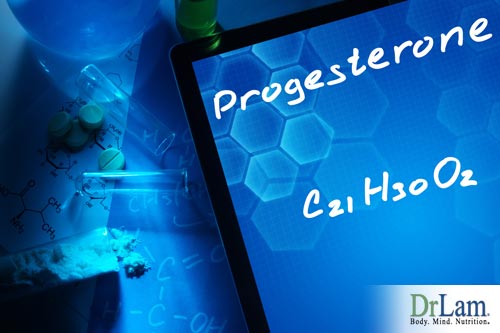
Hormonal imbalances are unfortunately fairly common in women and in men. The two main sex hormones in women are estrogen and progesterone. Men also need both of these hormones, though in different quantities. These two hormones need to exist in a careful balance for good health in both genders. But when this balance is lost, it can cause a range of troubling problems and symptoms. One of the most common solutions for this type of problem is estrogen dominance progesterone cream. This is often used to increase progesterone levels and bring the hormones back to a more natural balance. Here’s what you need to know about this remedy and whether it’s worth trying.
Progesterone is made from pregnenolone, which in turn comes from cholesterol. The production of progesterone occurs in several places. In women, it is mostly produced in the ovaries just before ovulation and levels increase rapidly after ovulation. It’s also produced in the adrenal glands in both sexes and in the testes in males.
In women, progesterone levels are highest during ovulation (days 13 to 15 of the menstrual cycle). If fertilization does not take place during this stage, the secretion of progesterone decreases and menstruation occurs. If fertilization does occur, then the placenta secretes progesterone throughout the pregnancy and acts to prevent spontaneous abortion. About 20-25 mg of progesterone is produced per day during a woman's monthly cycle. Up to 300-400 mg is produced daily during pregnancy. During menopause, the total amount of progesterone declines to less than 1% of the pre-menopausal level. This is a very extreme drop and it may be responsible for many of the symptoms experienced before, during and after menopause.
Progesterone is a very important hormone in the hormone synthesis pathway. In addition to being the precursor to estrogen, it is also the precursor of testosterone and the all-important adrenal cortical hormone cortisol. Cortisol is essential for stress management, sugar and electrolyte balance, blood pressure and general survival. Progesterone on the other hand serves to promote the survival and development of the embryo and fetus. It acts as a precursor to many important steroid hormones and helps to regulate a broad range of biological and metabolic effects in the body. When you’re under chronic stress, progesterone production is reduced as the body favors cortisol production to reduce stress. This is a vital point when considering your stress response and management.
Estrogen is produced in the ovaries. It regulates the menstrual cycle, promotes cell division and is largely responsible for the development of secondary female characteristics during puberty. In non-pregnant, pre-menopausal women, only 100-200 micrograms of estrogen is secreted daily. However, during pregnancy, much more is secreted. Estrogen is produced in the ovaries, adrenal and fat tissues. During menopause, the amount of estrogen in the body declines by about fifty to sixty percent. Production still continues during this stage however, in the adrenals and in the fat cells.
Estrogen and progesterone work in synchronization with each other. These hormones have opposite actions and act to balance each other to achieve hormonal harmony in both sexes. That’s why it can be so devastating when these hormones go out of balance. It’s also why many women consider using estrogen dominance progesterone cream to try to regain their health.
Progesterone acts primarily as an antagonist to estrogen in your body, which means that it acts in opposition to estrogen. For example, estrogen can cause breast cysts while progesterone protects against breast cysts. Estrogen enhances salt and water retention while progesterone is a natural diuretic. Estrogen has also been associated with breast and endometrial cancer, while progesterone has cancer preventive effects.
Some of the functions of progesterone include:
Most significantly, it is shown that high amounts of estrogen can induce a host of metabolic disturbances. The body's primary way of counterbalancing estrogen is progesterone. And when this balancing mechanism is dysfunctional, a multitude of health related problems can arise.
Women who have estrogen dominance or progesterone deficiency often experience a range of troubling symptoms. Estrogen dominance syndrome affects around 50% of women over 35 years old as they enter the transitional phase of aging (ages 35 to 45). It can occur during menopause when progesterone production falls to approximately 1% of its pre-menopausal level while the production of estrogen falls to about 50% of its premenopausal levels. But it can also occur at any point throughout your life due to a range of factors.
Estrogen dominance progesterone cream can be an effective way to reduce or eliminate these symptoms as they will help to balance these hormones in a more natural way. If you have estrogen dominance, you can expect to experience:
Some of the symptoms of progesterone deficiency can be very similar. The most common symptoms include:
The similarity between the symptoms of these hormone imbalances is often part of the reason why progesterone deficiencies are overlooked. However, if you want to be healthy then you need to have both of these hormones in the right levels, which means you may need to try estrogen dominance progesterone cream
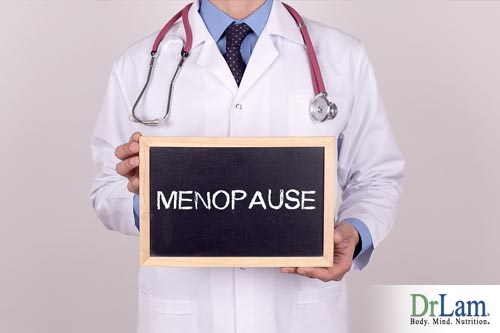
During menopause, many women experience hormonal imbalances and require estrogen dominance progesterone cream to help correct them. Some of the symptoms of these imbalances include:
The breakthrough in the treatment of menopausal symptoms came in 1964 when Dr. Wilson first reported that the lack of estrogen causes menopause. In response, pharmaceutical companies introduced a synthetic estrogen hormone called Premarin. With this drug, symptoms of menopause such as hot flashes were greatly reduced. There was little doubt at this stage that menopause was solely due to estrogen deficiency. Few doctors knew then that estrogen deficiency alone could not explain many of the symptoms of menopause.
For example, many women who are post-menopausal but cannot take HRT can experience relief from symptoms when using progesterone replacements. This fact clearly shows that there is more to the menopausal picture than a deficiency of estrogen.
HRM therapy can also cause side effects. These include fat accumulation at the hips and abdomen, osteoporosis, loss of sex drive and even swollen breasts. In addition, estrogen replacement doesn’t help increase a woman’s sex drive. Supplementing with estrogen alone does not increase the sex drive, but supplementing with progesterone together with low doses of estrogen does.
During menopause, the absolute level of estrogen decreases by 50% to a level below what is needed for pregnancy. This level is often enough for other normal body functions through the golden years. This is the way nature intended it to be. Menopause is therefore a normal physiological adjustment that does not produce any undesirable symptoms. However, many women experience a range of problems and symptoms because of menopause. This usually occurs because of hormonal circuit abnormalities.
Dr. John Lee was a world-renowned authority on natural hormonal balance and author of the book Progesterone: The Multiple Roles of A Remarkable Hormone. He treated thousands of menopausal women in the 1980s and 1990s with a program that was contrary to popular medical thinking at that time. Instead of prescribing estrogen alone (the standard of medical practice then), Dr. Lee prescribed natural progesterone alone for treatment of menopausal symptoms. In addition to relieving the menopausal symptoms, the treatment was able to reverse osteoporosis and prevent cancer. Studies had confirmed that Dr. Lee's approach using progesterone alone had vast palliative effects.
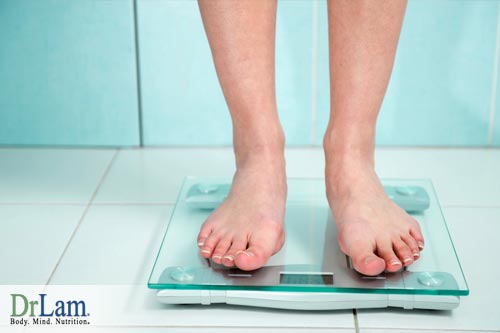 The key to Dr. Lee's approach is to understand the balance between estrogen and progesterone. In pre-menopausal women, estrogen is always in balance with progesterone. When these two important hormones are out of balance, hormone related illnesses emerge. Symptoms include weight gain, fatigue, auto-immune disorders, fibrocystic diseases, loss of libido, depression, headaches, joint pain and mood swings. These are just some of the common symptoms experienced during menopause, peri-menopause and pre-menstrual periods.
The key to Dr. Lee's approach is to understand the balance between estrogen and progesterone. In pre-menopausal women, estrogen is always in balance with progesterone. When these two important hormones are out of balance, hormone related illnesses emerge. Symptoms include weight gain, fatigue, auto-immune disorders, fibrocystic diseases, loss of libido, depression, headaches, joint pain and mood swings. These are just some of the common symptoms experienced during menopause, peri-menopause and pre-menstrual periods.
According to Dr. Lee, what is commonly perceived as an absolute estrogen level deficiency during the menopausal years is in effect estrogen dominance caused by an extreme low progesterone level. Since progesterone's role is to balance estrogen, the extremely low level of progesterone experienced after menopause leads to a relative dominance of estrogen, despite the 50% drop in estrogen levels.
Dr. Lee treated menopause as an estrogen dominance syndrome. His treatment was simple - reduce the estrogen to progesterone ratio by increasing progesterone. When the opposing force of progesterone is increased, the toxic effect of estrogen is decreased. Fortunately for many women who followed Dr. Lee's advice, their menopausal symptoms reduced remarkably using estrogen dominance progesterone cream and similar remedies.
Your body normally functions in perfect homeostasis. But this has changed over the last 70 years because of many factors, including the environment. With the advent of modern society and the industrial state, the female body has been subjected to unprecedented insult from environmental estrogen-like hormones. This has raised the demand for effective remedies like estrogen dominance progesterone. There are a range of causes of estrogen dominance including:
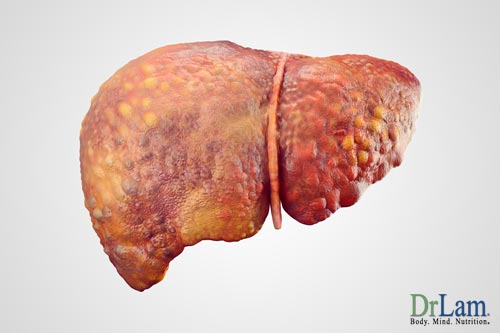
This shows that lifestyle is the single most important factor in causing estrogen and progesterone imbalance. And this can also be a key factor in the development of Adrenal Fatigue Syndrome (AFS) and Hormonal Circuit imbalances.
Stress is a key cause of hormonal imbalances, but this problem is compounded when you have AFS. Stress can be very damaging for the body. Fortunately, the NeuroEndoMetabolic (NEM) stress response is designed to protect your body from that damage. But this is a short term solution. When you’re under stress on a chronic basis because of poor lifestyle choice, a poor diet, lack of exercise, environmental factors, or a combination of stressors, this system can start to break down.
The adrenals excrete the stress hormone cortisol, which is essential for the NEM stress response. As a result, when you’re under stress, the demand for cortisol is very high. If this continues over the long term, it can result in adrenal fatigue. The body consists of interconnected circuits and systems, so as the adrenals start to decline in health then it affects the connected systems as well. This is particularly relevant to the Hormonal Circuit, which includes the adrenals as well as the ovaries or testes and the thyroid. As a result, hormonal imbalances are very common in people who have AFS, and will only worsen if the underlying adrenal fatigue is not addressed.
This is a big problem when it comes to conventional treatments for hormonal imbalances. The medications used are harsh chemicals which can cause additional stress, worsening adrenal fatigue. Many of these remedies add additional estrogen to the system, which can cause problems as well. Estrogen dominance is very common in people with AFS as the Hormonal Circuit functioning declines. Progesterone levels can drop and estrogen dominance symptoms can appear. Adding extra estrogen to this situation can obviously be very detrimental to your overall health and to the health of the Hormonal Circuit.
Progesterone deficiency is very common in AFS. Chronic stress can cause the adrenal glands to go into overdrive, with excessive secretion of cortisol. Excessive cortisol can block progesterone receptors, making them less responsive to progesterone. Additional factors that often occur with AFS, such as circuit malfunctions, inflammation, bowel disturbances, and other symptoms will only compound this problem. They will cause an even greater demand for cortisol and further impede progesterone uptake.
As AFS progresses, the adrenals can become exhausted. This can cause a lowering of general hormone production, including progesterone. Production of progesterone by the adrenals comes to a halt as the body focuses on producing cortisol and not progesterone or other sex hormones. Insufficient progesterone production then leads to estrogen dominance.
It is prudent to optimize the adrenal gland function prior to or with progesterone supplementation with estrogen dominance progesterone cream or other strategies. You will need a doctor’s supervision to assist with AFS recovery, but some good general strategies include:
Once the concept of estrogen dominance is understood, the solution is simple--reduce the estrogen load and/or increase the progesterone load. If you have AFS, then part of this has to include normalizing adrenal function to rebalance the Hormonal Circuit. This can be a complicated process that involves overall stress reduction as well as remedies for individual symptoms and issues that arise as a result of AFS.
There are a range of strategies that can rebalance the hormones. One of the most effective is to try physiological doses of progesterone (approximately 20-30 mg/day) to overcome the estrogen dominance and reestablish hormonal balance. Progesterone can also be supplemented orally or topically through estrogen dominance progesterone cream.
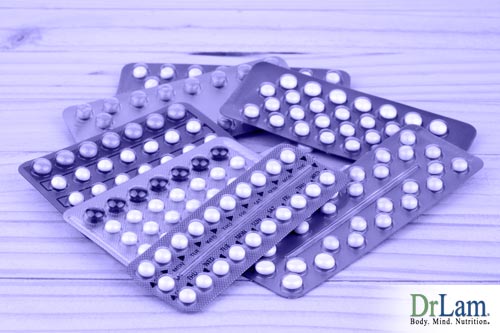
There are also certain foods that will help replenish your progesterone levels. Phytoestrogen rich food such as soy products can help. These foods contain weak estrogens that competitively take up the estrogen receptor site, making estrogen less available for use. Foods and herbs that have estrogenic effects include:
While widely promoted as the miracle food in recent years by the soy industry, it should be noted that soy products have their own set of problems. Unfermented soy products such as tofu contain acid, which can rob the body of many valuable nutrients and should not be eaten in large quantities. Fermented soy products, such as miso, do not have this problem and are a healthier choice.
Estrogen dominance progesterone cream can be one of the most effective solutions for hormonal imbalances. Some of the benefits of these solutions include:
The natural form of progesterone is derived from wild yam. It is very different from the synthetic unnatural form made in a laboratory (the widely prescribed Provera). The synthetic version is a chemical compound called progestin. It is a prescription drug commonly used in small amounts to balance the estrogen effect in a hormone replacement program. As a synthetic drug, progestin is far more powerful than a woman's natural progesterone. It is metabolized in the liver into toxic metabolites which can severely interfere with the body's own natural progesterone. This can create other hormone-related health problems and further exacerbate estrogen dominance. And if you have AFS, it can add to the toxic overload in your body, increase your stress levels, and worsen the underlying adrenal fatigue.
The structural differences between natural and synthetic progesterone are significant and have direct bearing on their functionality. Whereas natural progesterone causes a reduction in water and salt retention, synthetic progesterone does the opposite. This is why some women taking synthetic progesterone experience bloating and fluid retention. In fact, studies have shown that the administration of synthetic progesterone lowers the blood level of the body's natural progesterone.
Reported side effects of synthetic progesterone can include:
This medication is contraindicated in those with thrombophlebitis, liver dysfunction, and known or suspected malignancy of the breasts and genital organs. One of the metabolites in this medication also has an anesthetic effect on brain cells.
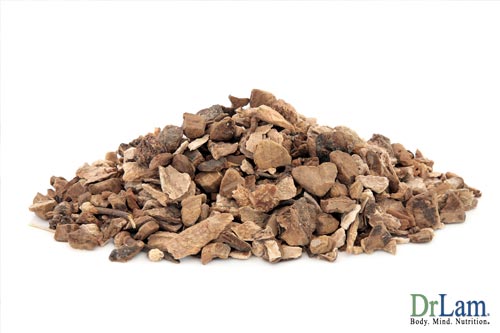
Natural progesterone is obtained by extracting diosgenin from wild yams and then converting this component into natural progesterone in the laboratory. It’s referred to as natural because the body can convert it into molecules that are identical to progesterone molecules manufactured in the body.
This yam-derived natural progesterone should not be confused with yam extracts commonly sold in health food stores. The human body easily converts natural progesterone into the identical molecule made by the body. However, it cannot convert yam extracts into progesterone. There is no evidence that such extract is converted into progesterone once it enters into the human body. No conclusive formal studies have ever been conducted that identify any particular benefits from wild yam extracts.So, if you have hormonal imbalances, it’s much more effective to look for natural estrogen dominance progesterone cream rather than using untried products.
You will also need to choose between high dose or low dose estrogen dominance cream and this will depend on the benefits you’re looking for. Always discuss this with a medical professional before making a choice.
Estrogen dominance progesterone cream comes in a variety of concentrations. Which is best? Low dose cream costs a little bit more, but it’s usually the better way to go for two important reasons.
Firstly, excessive progesterone in high dose (10%) cream is metabolized in the liver. Some of the metabolites that are produced as the progesterone is broken down may have anesthetic properties on the brain, causing lethargy and depression. Secondly, progesterone is rapidly absorbed from the skin and there is a danger of uneven progesterone release into the bloodstream. Since progesterone has a half-life of only 5 minutes once in the blood, its effectiveness is limited.
Other physicians favor a higher potency progesterone cream ( up to 10%) because they have better results. Regardless of whether it is high or low dose, the key is that your progress is monitored by a qualified health care professional. Whichever cream is recommended for you, make sure that it’s natural as this is more easily utilized by your body.
No known side effects exist when using natural estrogen dominance progesterone cream in physiological amounts (20-30 mg a day for women and 6-10 mg a day for men) under normal conditions. It is therefore very safe. However, as with most substances, too much of a good thing can cause problems. Too much progesterone is actually counterproductive, as chronically high doses of progesterone over time causes progesterone receptors to turn off. This reduces the effectiveness of the medication and may result in toxic side effects. Some possible side effects include:
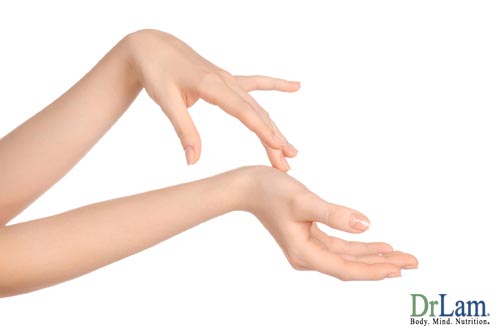
If you notice any of these symptoms, please see your medical practitioner immediately. In fact, you should not attempt any treatment for hormonal imbalances such as estrogen dominance progesterone cream without medical supervision and help. This is particularly true if you have AFS and need to avoid additional stress and poor health.
Natural progesterone can be administered orally, topically, sublingual or by injection. Oral administration is relatively ineffective as it is quickly metabolized in the liver. Injection is very effective but can cause irritation to the injection site and it can be quite painful. To achieve a physiological dose (and not a higher pharmacological dose), the best method is sublingual or topical.
Estrogen dominance progesterone cream is easily absorbed by the skin and is 5 to 7 times more effective in reaching the bloodstream than oral forms of progesterone. In other words, 100-200 mg of oral progesterone is needed to obtain the equivalent benefit of 20-30 mg of transdermal progesterone. There is some danger of progesterone build up in the body when it’s applied to the skin. This is commonly seen in those who are self-administering topical progesterone cream in the wrong area. Progesterone cream should be applied to areas of the body that have good circulation but are not high in fat. These areas include the wrist, back of the neck, and under part of the upper arm. Areas such as the abdomen, buttocks, and breasts are high in fat and will retain progesterone faster than other parts of the body.
Another route you can try is sublingual progesterone. This offers the best and most direct delivery route, as it is well absorbed directly into the bloodstream. However, the required alcohol based for sublingual drops may not be tolerated by some.
For best stabilization of progesterone absorption and effectiveness, natural progesterone should be taken or applied in divided doses, two to three times a day.
To pass the skin barrier and achieve maximum absorption, natural estrogen dominance progesterone cream should be carried in an oil/water emulsion that contains the same fatty acid composition as the skin. Mineral oil will prevent the progesterone from being absorbed into the skin if topical progesterone is used.
There is a wide variety of dosages available. Topical estrogen dominance progesterone cream should contain at least 400 mg to 600 mg of natural progesterone per ounce. Each one-half teaspoon application then supplies a minimum of 26 mg of progesterone (women usually produce about 20 mg of progesterone daily during normal circumstances). To simplify matters, the better suppliers use a pump, with one pump delivering about 20 mg of progesterone. To get the physiologic dose, women should usually apply one full pump a day (20 mg), while men can apply one-half pump a day (10 mg).
A sample rotational application protocol
Repeat this cycle from day 4 onward. In other words, day 4 will be the same as day 1, and day 5 will be the same as day 2, etc.
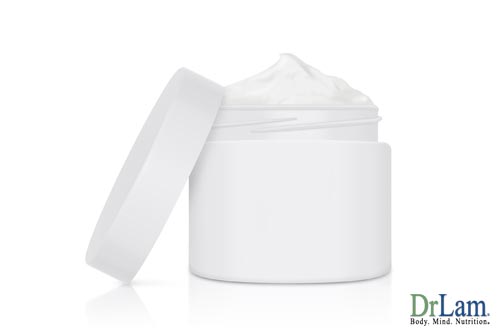
You must read the label carefully before use. Studies have shown that many commonly used topical commercial progesterone formulations contain less than 15 mg of progesterone per ounce. In fact, some of these creams contain as little as 2 mg of progesterone. Also, ensure that your estrogen dominance progesterone cream is legitimate by checking for the "U.S.P. Progesterone" on the label. U.S.P. stands for United States Pharmacopoeia, which is the international standard of purity. It confirms that the progesterone is the identical molecule as that produced by the human body.
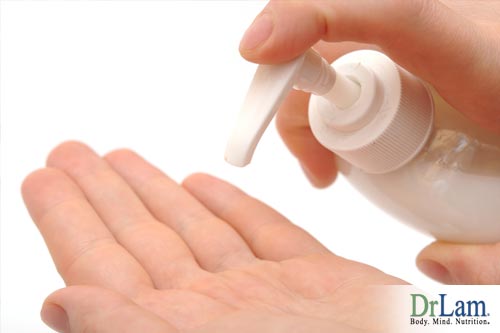
You will obviously need to talk to your doctor before you try estrogen dominance progesterone cream or any other hormone replacement. If you try to do this on your own, you may cause more damage. This is especially true if you have AFS and your system is oversensitive. But as a general guide, the goal of progesterone replacement is to restore the normal physiological progesterone level in the body for two to three weeks out of a month; the way it was designed by nature. An ovulating woman makes about 20 mg a day for about 12 days each month after ovulation. That works out to about 240 mg of progesterone per month.
An effective estrogen dominance progesterone cream should supply 480 mg of progesterone per ounce (960 mg per 2 ounce). This means that each two-ounce jar or tube will contain 3% by volume or 1.6% by weight of U.S.P. Progesterone. Using one ounce over two or three weeks will provide about 240 mg if the absorption is 50%. This is the ideal target dose to apply. This works out to 1/8 to 1/2 teaspoon of the cream per day, or three to 10 drops of it in oil form. For creams that come in pre-set metered doses, one full pump normally contains the equivalent of 20 mg progesterone. This is simple to remember - one full pump a day for women and half a pump a day for men in divided doses.
If sublingual drops are used, make sure that the drops are applied sublingually and washed in the mouth for best absorption. Do not take in more than 6 drops at a time as it can be swallowed easily and lose its effectiveness.Sublingual progesterone drops are 99% absorbed, while micronized progesterone in a capsule is only about 40% absorbed, and some studies even report an absorption of less than 15%.
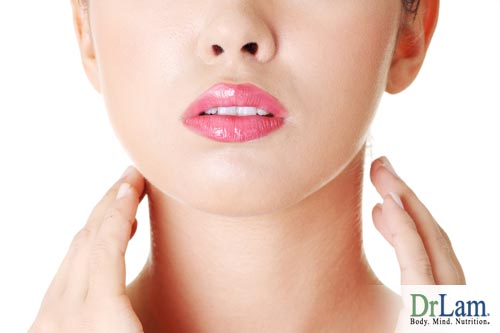
The following are general recommendations for topical estrogen dominance progesterone cream application that may need to be modified for specific situation:
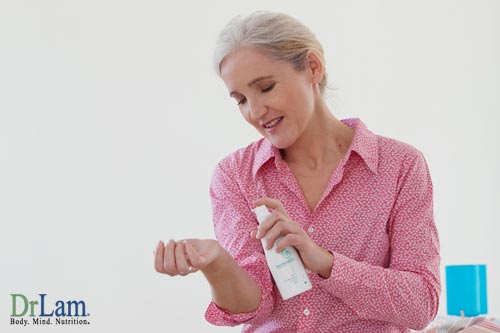 Every two to three months, reduce the estrogen supplement again by half. Estrogen and progesterone can be used together during a three-week cycle each month, leaving a rest period of 7 days without either hormone. The estrogen dose should be low enough that monthly bleeding does not occur but high enough to prevent vaginal dryness or hot flashes.
Every two to three months, reduce the estrogen supplement again by half. Estrogen and progesterone can be used together during a three-week cycle each month, leaving a rest period of 7 days without either hormone. The estrogen dose should be low enough that monthly bleeding does not occur but high enough to prevent vaginal dryness or hot flashes.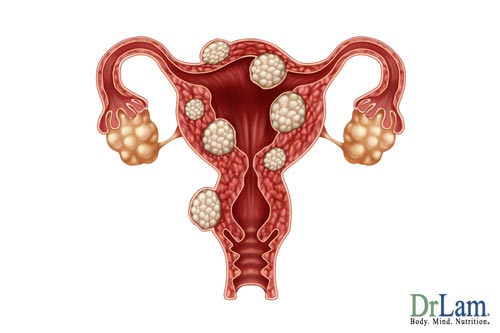
Men too can benefit from estrogen dominance progesterone cream. Males also produce estrogen and estradiol (E2), but in much lower amounts than women. They also produce progesterone, but about half the amount than women do. This hormone is produced in the testes and in the adrenal glands. While the level of progesterone in males is significantly lower than in females, some womens' progesterone levels fall below that of men of the same age during menopause.
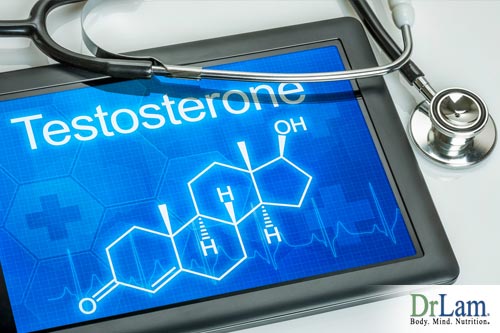
The male hormone, testosterone, is an antagonist to estradiol (E2). Like progesterone, testosterone can stimulate new bone formation, increase bone density, and a lack of it causes osteoporosis. Testosterone is made from progesterone, so low levels of progesterone can affect testosterone levels. Under normal conditions, men normally continue to produce a relatively normal level of testosterone well into their seventies.
Physiological doses of progesterone can also enhance the sex drive. It may also help decrease male balding, which occurs because of a rise in testosterone.
Contrary to common perception, testosterone does not cause prostate cancer. Studies have shown that men with the highest level of testosterone have the least prostate enlargement. Conversely, men with the highest level of estrogen often have enlarged prostates. Benign prostatic hyperplasia (BPH), a prostate enlargement condition, is a common condition affecting the majority of males above age 50. Progesterone cream can help to reduce prostate size. It also has an inhibitory effect on 5-alpha reductase, which is responsible for converting testosterone to di-hydrotestosterone (DHT), a chemical linked to prostate cancer. So, ensuring that you have adequate progesterone levels can actually help protect your prostate against cancer.
Estrogen is also a factor in prostate cancer risk. Declining testosterone from aging, together with increasing levels of estrogen, is the most likely reason for prostate enlargement and cancer in men. Since progesterone has an antagonistic effect on estrogen, using estrogen dominance progesterone cream could indirectly improve testosterone levels and reduce the effects of estrogen, lowering prostate cancer risk.
Modern society has brought with it many external hormonal insults to our body. Such insults are often seen in symptoms associated with menopause, PMS and perimenopause. The common thread of these symptoms is often relative estrogen dominance rather than absolute estrogen deficiency as traditionally thought. Some strategies for correcting these issues include:
If you have hormone imbalances and want help identifying effective solutions, then contact the team at +1-626-571-1234 or click here to use the Ask The Doctor System.
First-trimester miscarriage is usually due to low progesterone. This is associated with AFS.
If a woman's hormones are balanced, there should not be any symptoms like hot flashes.
Progesterone cream can be used to balance the estrogen load in the body. Depending on many conditions, such as adrenal health, weight issues, stress issues, etc. you may or may not need to use it.
It is best to consult your doctor first before starting progesterone cream. Sometimes you may have other health related issues such as AFS or Thyroid imbalance that may affect the ovarian hormones.
Some people with AFS feel great during pregnancy due to progesterone's calming effect, while others are not so fortunate. They tend to crash and become sluggish as the pregnancy progresses. If it is more severe, a first-trimester miscarriage that tends to be more prevalent. With those who are in advance stages of AFS before becoming pregnant.